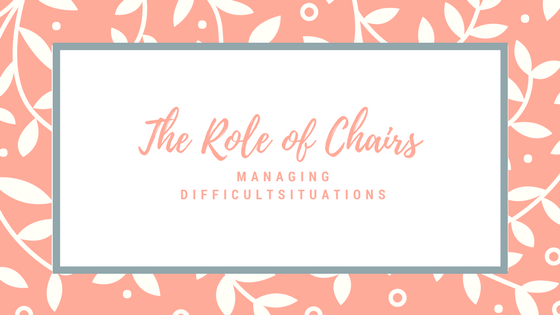The Role of Chairs in Managing Difficult Board Dynamics

According to recent guidance produced by the Association of Chairs, chairs play a critical role in setting the tone and leading by example. As dynamics is about people, the effective chair draws on high levels of emotional intelligence in dealing with varying motivations and disparate characters on the board. Such a chair manages the board through moments of dysfunction, has difficult conversations, confronts problematic board behaviours and identifies chances to resolve situations. The journey to finding fulfilment in the hot seat is continuous which means that a good chair challenges his or her own complacency. Chairs and vice chairs set the tone for governance and leadership.
15 Practical chairing tips
- Watch out for a shortage of dissenting views around the table
- Understand board dynamics
- Create a culture for giving and receiving feedback style and personalities matter.
- Be conscious of external factors and pressures that impact on the board. its governance and accountability
- Find out what motivates trustees to join and stay on the board
- Work out how you as chair can foster productive board dynamics
- Work with the board to establish shared norms and expectations.
- In partnership with the board work out what will encourage group and team working. Pay attention to performance, goal setting, focus and impact
- Attend to practical details such as encouraging the adoption of positive behaviours, engaging in purposeful and focused discussion, ensuring papers are clear, concise and appropriate, helping board members to feel engaged, energised and motivated.
- Provide a conducive and facilitative atmosphere. Refreshments and break are vital in supporting the board. Work with the staff to shape a culture of strategic partnership that supports and encourages collaboration, support, celebration and challenge.
- Periodically hold board only sessions. Be clear about the purpose and parameters of such a session.
- Ensure your approach as chair is consistent with relevant policies, procedures and regulation.
- Invest in your own development as chair. Ask for support as appropriate. Mentors, coaches, facilitators and chairs from other organisations may be able to provide a helping hand or a constructive sounding board.
- Discourage inappropriate behaviours and the toxic atmosphere. Self-awareness can be insightful. It may assist you in acknowledging when you as chair may be part of the problem. Emotional intelligence offers the perspective to be conscious of biases, prejudices, hubris and ego.
- Succession planning is a gift as well as strengthening your bench, so that you have strong leadership and governance at the helm. Plan your departure in a way that offers a smooth transition.
Click on www.associationof chairs.org.uk






